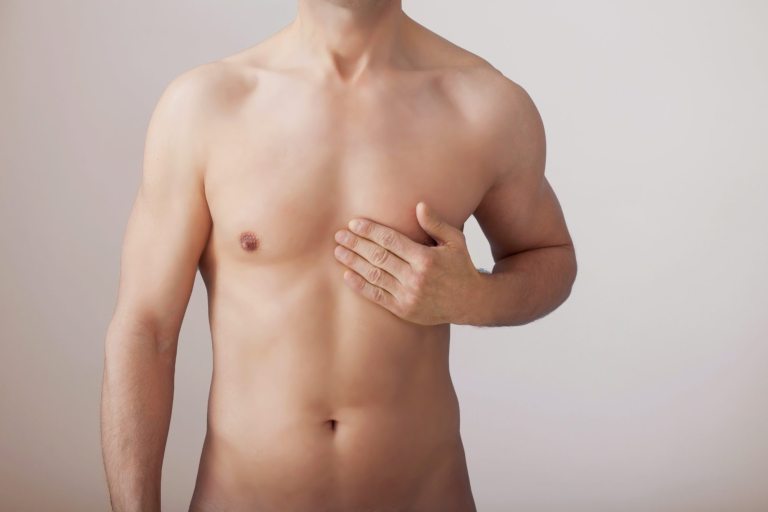Gynecomastia Surgery in Abu Dhabi is a popular procedure for men seeking to achieve a flatter, more contoured chest. Post-operative swelling is a common part of the recovery process and can impact comfort and healing if not managed properly. Proper management of swelling can enhance recovery time, improve aesthetic results, and ensure a smoother healing experience. In this guide, we will explore effective strategies to reduce swelling after gynecomastia surgery, helping patients achieve optimal results and faster recovery.
Understanding Swelling After Gynecomastia Surgery
Swelling is a natural response of the body to surgical trauma. When the body detects tissue injury, it responds by increasing blood flow and fluid accumulation in the affected area. This process helps facilitate healing but can cause discomfort and a swollen appearance. Post-surgical swelling typically peaks within the first few days and gradually subsides over several weeks. Recognizing the typical timeline and causes of swelling can help patients better manage their expectations and recovery process.
The Role of Inflammation in Swelling
Inflammation is the body’s natural process to protect and repair tissues after surgery. While necessary, excessive or prolonged inflammation can lead to increased swelling, discomfort, and delayed healing. Managing inflammation through appropriate post-operative care is crucial to minimizing swelling and promoting tissue recovery.
Practical Tips to Minimize Swelling
Effective management of swelling involves a combination of lifestyle adjustments, proper post-operative care, and adherence to medical advice. The following points outline practical steps to reduce swelling after gynecomastia surgery.
1. Use of Compression Garments
Wearing a compression garment is essential after gynecomastia surgery. These specially designed garments help support the chest tissues, reduce fluid accumulation, and promote proper contouring. Consistent and correct use of compression clothing can significantly decrease swelling, provide comfort, and improve overall aesthetic outcomes.
2. Elevate the Chest Area
Elevation plays a vital role in minimizing swelling. Patients are advised to keep the chest elevated, especially during the initial days following surgery. Sleeping with the upper body slightly elevated using pillows or a recliner can help facilitate fluid drainage and reduce accumulation in the surgical area.
3. Apply Cold Compresses
Cold therapy is a well-known method to reduce swelling and alleviate discomfort. Applying cold packs or ice wrapped in a cloth to the surgical area for short intervals (about 15-20 minutes) can constrict blood vessels, decrease blood flow, and limit swelling. It’s important to follow medical guidance on cold therapy duration and frequency.
4. Follow a Healthy Diet
A balanced diet rich in anti-inflammatory foods can support healing and reduce swelling. Incorporating foods high in antioxidants, vitamins, and minerals—such as fruits, vegetables, nuts, and omega-3 fatty acids—can help mitigate inflammation and promote tissue repair. Adequate hydration is equally important to facilitate lymphatic drainage and prevent fluid retention.
5. Limit Physical Activity
Rest is crucial immediately after surgery. Strenuous activities, heavy lifting, or vigorous exercise can increase blood flow and fluid accumulation, worsening swelling. Patients should follow their surgeon’s guidance regarding activity levels and gradually resume normal routines as advised.
6. Stay Hydrated
Proper hydration helps maintain the body’s fluid balance and supports the lymphatic system, which is responsible for removing excess fluids and waste products from tissues. Drinking plenty of water during recovery can aid in reducing swelling and expediting healing.
7. Take Prescribed Medications
While specific medications are typically prescribed for pain management, anti-inflammatory drugs may also be recommended to reduce swelling. It is important to take all medications as directed and communicate with the healthcare provider about any concerns or side effects.
8. Massage and Lymphatic Drainage
Gentle massage techniques can stimulate lymphatic drainage, helping to remove excess fluids and reduce swelling. Patients should seek guidance from their healthcare provider or a trained therapist to ensure safe and effective massage practices during recovery.
Monitoring and When to Seek Medical Advice
Regular follow-up appointments are vital to monitor healing progress. Patients should observe the surgical site for signs of excessive swelling, unusual discomfort, or other symptoms that may require medical attention. Adhering to post-operative instructions and maintaining open communication with healthcare professionals can ensure optimal recovery.
Additional Tips for a Smooth Recovery
Beyond swelling management, maintaining overall health and following personalized medical advice can enhance healing. Avoiding smoking and alcohol, managing stress, and ensuring proper wound care are important components of a successful recovery process.
FAQs About Swelling Management After Gynecomastia Surgery
Q1: How long does swelling typically last after gynecomastia surgery?
A: Swelling usually peaks within the first few days and gradually diminishes over several weeks, with most patients experiencing significant reduction within 4-6 weeks.
Q2: Can I exercise to reduce swelling faster?
A: Light activity such as walking can promote circulation and lymphatic drainage, but intense exercise should be avoided until approved by your surgeon to prevent complications.
Q3: Are there any natural remedies to help reduce swelling?
A: Incorporating anti-inflammatory foods, staying hydrated, and gentle lymphatic drainage massage can support swelling reduction; however, always consult your healthcare provider before trying new remedies.
Q4: How important is wearing compression garments during recovery?
A: Wearing compression garments as advised is crucial for minimizing swelling, supporting tissue healing, and achieving optimal aesthetic results.
In conclusion, managing swelling after gynecomastia surgery is essential for comfort, healing, and aesthetic success. Through a combination of proper post-operative care, lifestyle adjustments, and medical guidance, patients can effectively reduce swelling and enjoy a smooth recovery.







0 Comments